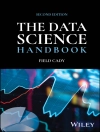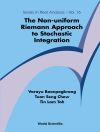This accessible introductory textbook provides a straightforward, practical explanation of how statistical analysis and error measurements should be applied in biological research.
Understanding Statistical Error – A Primer for Biologists:
* Introduces the essential topic of error analysis to biologists
* Contains mathematics at a level that all biologists can grasp
* Presents the formulas required to calculate each confidence interval for use in practice
* Is based on a successful series of lectures from the author’s established course
Assuming no prior knowledge of statistics, this book covers the central topics needed for efficient data analysis, ranging from probability distributions, statistical estimators, confidence intervals, error propagation and uncertainties in linear regression, to advice on how to use error bars in graphs properly. Using simple mathematics, all these topics are carefully explained and illustrated with figures and worked examples. The emphasis throughout is on visual representation and on helping the reader to approach the analysis of experimental data with confidence.
This useful guide explains how to evaluate uncertainties of key parameters, such as the mean, median, proportion and correlation coefficient. Crucially, the reader will also learn why confidence intervals are important and how they compare against other measures of uncertainty.
Understanding Statistical Error – A Primer for Biologists can be used both by students and researchers to deepen their knowledge and find practical formulae to carry out error analysis calculations. It is a valuable guide for students, experimental biologists and professional researchers in biology, biostatistics, computational biology, cell and molecular biology, ecology, biological chemistry, drug discovery, biophysics, as well as wider subjects within life sciences and any field where error analysis is required.
Circa l’autore
Dr Marek Gierlinski is a bioinformatician at College of Life Science, University of Dundee, UK. He attained his Ph D in astrophysics and studied X-ray emission from black holes and neutron stars for many years. In 2009 he started a new career in bioinformatics, bringing his knowledge and skills in statistics and data analysis to a biological institute. He works on a variety of topics, including proteomics, DNA and RNA sequencing, imaging and numerical modelling.












